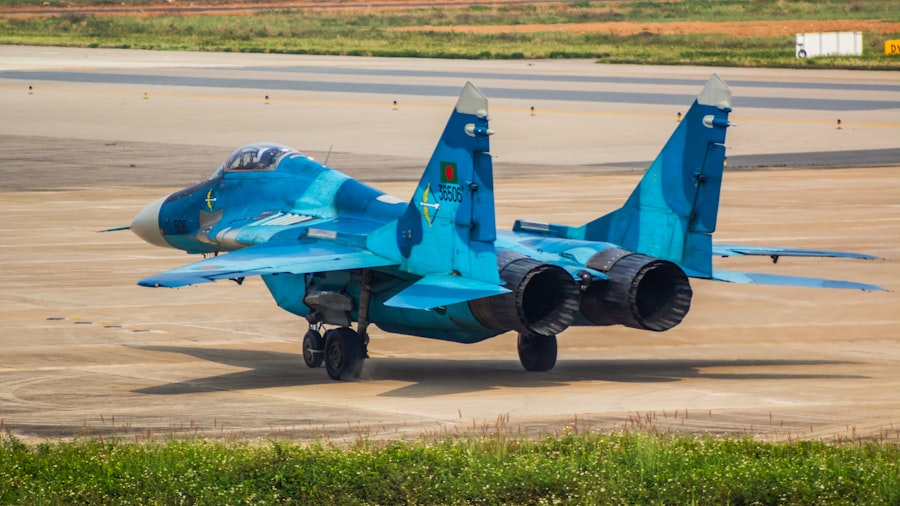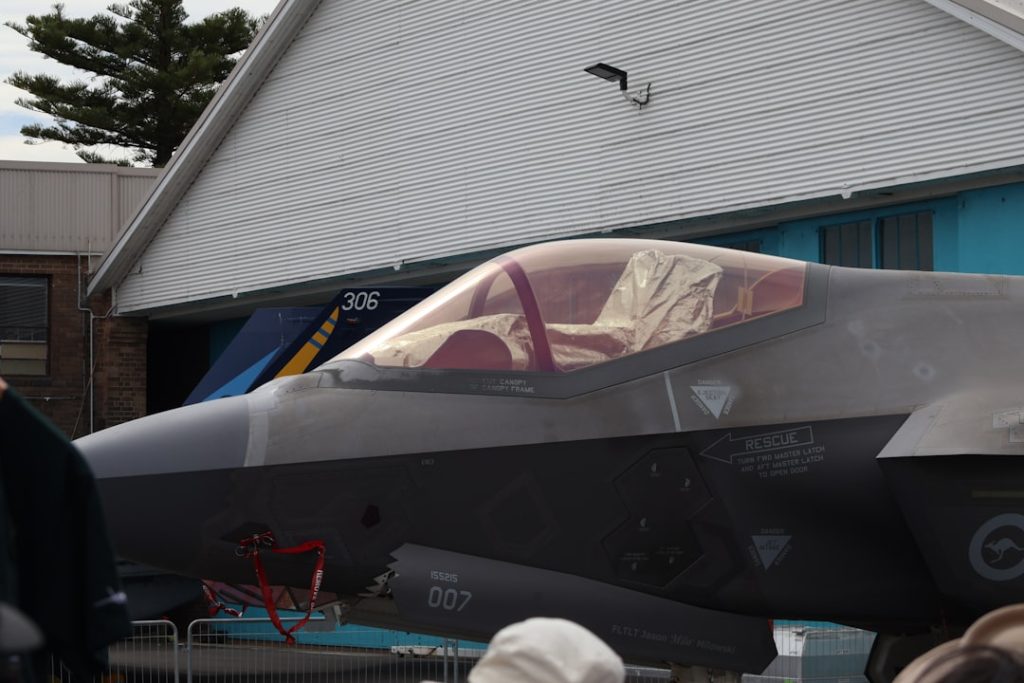Aerospace and defense technology represents a critical intersection of engineering, innovation, and national security. This sector encompasses a wide array of disciplines, including aeronautics, astronautics, and military systems, all of which are essential for maintaining a nation’s security and advancing its capabilities in both civilian and military applications. The aerospace industry is responsible for the design, development, and production of aircraft, spacecraft, satellites, and related systems, while the defense sector focuses on technologies that enhance military effectiveness and operational readiness.
The synergy between these two fields has led to groundbreaking advancements that not only bolster national defense but also contribute to commercial aviation and space exploration. The evolution of aerospace and defense technology has been driven by a combination of geopolitical factors, technological advancements, and the increasing complexity of global threats. From the early days of flight to the sophisticated systems in use today, the journey has been marked by significant milestones.
The development of jet engines revolutionized air travel, while the advent of satellite technology transformed communication and reconnaissance. As nations face new challenges such as cyber warfare, terrorism, and space militarization, the demand for innovative solutions in aerospace and defense continues to grow. This article delves into various aspects of this dynamic field, exploring how emerging technologies are reshaping the landscape of aerospace and defense.
Key Takeaways
- Aerospace & Defense Technology encompasses a wide range of technologies and innovations that are crucial for national security and defense.
- Artificial Intelligence is revolutionizing the aerospace and defense industry by improving decision-making, autonomous systems, and predictive maintenance.
- Advancements in aircraft design and technology are leading to more efficient, sustainable, and versatile aircraft with enhanced capabilities.
- Space exploration plays a vital role in defense technology, providing strategic advantages such as satellite communication, surveillance, and reconnaissance.
- Innovations in military communication and cybersecurity are essential for protecting sensitive information and ensuring secure communication channels in defense operations.
The Impact of Artificial Intelligence on Aerospace & Defense
Artificial intelligence (AI) is rapidly transforming the aerospace and defense sectors by enhancing decision-making processes, automating complex tasks, and improving operational efficiency. In military applications, AI algorithms can analyze vast amounts of data from various sources, including satellite imagery, drone surveillance, and social media feeds. This capability allows military strategists to gain insights into enemy movements and predict potential threats with unprecedented accuracy.
For instance, AI-driven systems can identify patterns in data that human analysts might overlook, enabling faster and more informed responses to emerging situations. Moreover, AI is playing a pivotal role in the development of autonomous systems, particularly unmanned aerial vehicles (UAVs). These drones can operate independently or in coordination with human operators, performing missions ranging from reconnaissance to targeted strikes.
The integration of AI into UAVs enhances their ability to navigate complex environments, avoid obstacles, and adapt to changing conditions in real-time. For example, the U.S. military’s MQ-9 Reaper drone utilizes AI algorithms to optimize flight paths and improve target acquisition, significantly increasing its operational effectiveness.
As AI technology continues to advance, its applications in aerospace and defense are expected to expand further, leading to more sophisticated systems capable of tackling a wider array of challenges.
Advancements in Aircraft Design and Technology

The field of aircraft design has witnessed remarkable advancements over the past few decades, driven by innovations in materials science, aerodynamics, and propulsion systems. Modern aircraft are now designed with an emphasis on fuel efficiency, reduced emissions, and enhanced performance. One notable example is the use of composite materials in aircraft construction.
These lightweight yet strong materials allow for greater fuel efficiency by reducing overall weight while maintaining structural integrity. The Boeing 787 Dreamliner is a prime illustration of this trend; it incorporates approximately 50% composite materials in its airframe, resulting in significant fuel savings compared to traditional aluminum designs. In addition to materials advancements, aerodynamics has also seen significant improvements through computational fluid dynamics (CFD) simulations.
Engineers can now model airflow around aircraft designs with incredible precision, allowing for optimization before physical prototypes are built. This capability not only accelerates the design process but also leads to more efficient aircraft shapes that minimize drag and enhance performance. Furthermore, advancements in propulsion technology, such as the development of more efficient turbofan engines and hybrid-electric propulsion systems, are paving the way for quieter and more environmentally friendly aircraft.
These innovations collectively contribute to a new era of aviation that prioritizes sustainability without compromising performance.
The Role of Space Exploration in Defense Technology
| Metrics | Data |
|---|---|
| Investment in Space Exploration | Billions of dollars |
| Number of Satellites for Defense | Hundreds |
| Technological Advancements from Space Exploration | GPS, Satellite Imaging, Communication Systems |
| Space-based Defense Systems | Missile Defense, Surveillance, Early Warning |
| Collaboration with Space Agencies | International Space Station, Joint Missions |
Space exploration has become increasingly intertwined with defense technology as nations recognize the strategic importance of space in modern warfare. Satellites play a crucial role in communication, navigation, reconnaissance, and surveillance—capabilities that are essential for military operations. The ability to gather real-time intelligence from space has transformed how militaries plan and execute missions.
For instance, the U.S. Department of Defense relies heavily on satellite imagery for monitoring adversarial activities and assessing battlefield conditions. Moreover, the militarization of space is becoming a pressing concern as countries invest in technologies that can protect their assets in orbit while potentially targeting those of adversaries.
The development of anti-satellite weapons and space-based missile defense systems highlights the growing recognition that space is a critical domain for national security. Additionally, initiatives like the U.S. Space Force underscore the importance placed on maintaining superiority in space operations.
As nations continue to explore the cosmos for scientific purposes, they must also grapple with the implications of these advancements for global security dynamics.
Innovations in Military Communication and Cybersecurity
Effective communication is paramount in military operations, where timely information can mean the difference between success and failure. Innovations in military communication technologies have evolved significantly over recent years, driven by advancements in secure communications systems and satellite networks. Modern military forces utilize encrypted communication channels that ensure secure transmission of sensitive information across various platforms.
This capability is vital for coordinating joint operations among different branches of the armed forces as well as allied nations. Cybersecurity has emerged as a critical component of military communication strategies due to the increasing threat posed by cyberattacks on defense networks. As militaries become more reliant on digital infrastructure for command and control operations, safeguarding these systems from malicious actors is paramount.
The implementation of advanced cybersecurity measures—such as intrusion detection systems, threat intelligence platforms, and robust encryption protocols—has become essential for protecting sensitive data from breaches. For example, the U.S. military has invested heavily in cyber defense initiatives to protect its networks from state-sponsored cyber threats while also developing offensive cyber capabilities to deter adversaries.
The Future of Unmanned Aerial Vehicles (UAVs) in Defense

Unmanned Aerial Vehicles (UAVs), commonly known as drones, have revolutionized military operations by providing capabilities that were previously unattainable with manned aircraft. The future of UAVs in defense is poised for further transformation as technological advancements continue to enhance their capabilities. One significant trend is the development of swarming technology, where multiple drones operate collaboratively to achieve mission objectives.
This approach allows for greater flexibility and adaptability on the battlefield while overwhelming enemy defenses through sheer numbers. Additionally, advancements in sensor technology are enabling UAVs to perform increasingly complex missions with greater precision. Modern drones are equipped with high-resolution cameras, infrared sensors, and advanced radar systems that allow them to gather intelligence in real-time while minimizing risks to personnel.
The integration of AI into UAV operations further enhances their effectiveness by enabling autonomous decision-making capabilities during missions. As nations invest in next-generation UAVs equipped with advanced technologies such as stealth features and enhanced payload capacities, their role in modern warfare will continue to expand.
The Use of 3D Printing in Aerospace and Defense Manufacturing
3D printing technology has emerged as a game-changer in aerospace and defense manufacturing by enabling rapid prototyping and production of complex components with reduced lead times and costs. This additive manufacturing process allows engineers to create intricate designs that would be difficult or impossible to achieve using traditional manufacturing methods. In aerospace applications, 3D printing is being used to produce lightweight parts that contribute to overall fuel efficiency while maintaining structural integrity.
One notable example is the use of 3D printing for producing engine components in aircraft. Companies like GE Aviation have successfully implemented additive manufacturing techniques to create fuel nozzles for jet engines that are not only lighter but also more efficient than their traditionally manufactured counterparts. This innovation not only streamlines production processes but also reduces waste associated with subtractive manufacturing methods.
In defense applications, 3D printing is being utilized to create spare parts on-demand for military equipment deployed in remote locations, minimizing downtime and logistical challenges associated with traditional supply chains.
The Ethical and Legal Implications of Advancements in Aerospace & Defense Technology
As advancements in aerospace and defense technology continue to accelerate, ethical and legal implications become increasingly significant considerations for policymakers and industry leaders alike. The deployment of autonomous weapons systems raises profound ethical questions regarding accountability and decision-making in combat situations. For instance, if an autonomous drone makes a mistake resulting in civilian casualties, determining liability becomes complex—should responsibility lie with the machine’s developers or its operators?
These dilemmas necessitate robust discussions around international humanitarian law and the need for regulations governing the use of such technologies. Furthermore, advancements in surveillance technologies pose challenges related to privacy rights and civil liberties. The proliferation of drones equipped with high-resolution cameras raises concerns about unauthorized surveillance and data collection on civilians without their consent.
Balancing national security interests with individual rights requires careful consideration from lawmakers who must navigate the evolving landscape of technology while ensuring that ethical standards are upheld. As nations continue to invest heavily in aerospace and defense innovations, fostering dialogue around these issues will be essential for shaping a future where technological progress aligns with ethical principles and legal frameworks.


